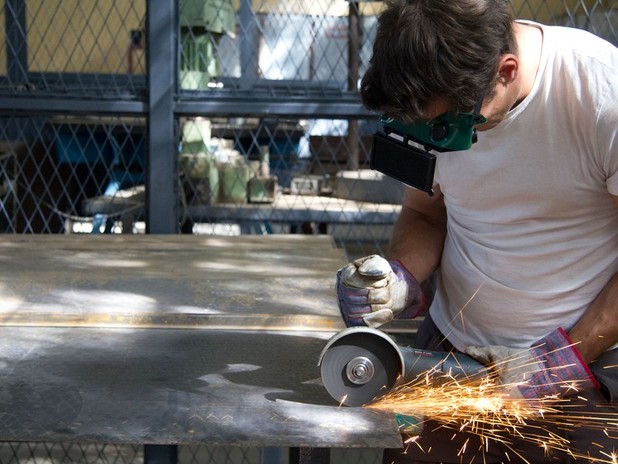December 27, 2013
Ravi Prakash and his IDEO.org team, the Teff Mudders, share some learnings from their experiences testing teff planting prototypes in Ethiopia.
After visiting the muddy soil conditions in Bahir Dar, we knew that it would be essential to test some ideas for how to move the planter through the soil and figure out how it could cut furrows. Considering that the soil in Ethiopia isn't something we can easily replicate back home, we had to get it right in the field.
We brainstormed different methods for moving the planter through the muddy soil and came up with ideas like a very skinny wheel, a pontoon, and even a pair of skis—Martin is Austrian after all! For cutting through the soil, we had a range of options from an arrow shape to cylinders to a shape called a duck foot.
Our plan was simple, we would spend a couple hours in the morning gathering supplies, and then spend the rest of the day in the shop making prototypes. We realized that less than a full day to make prototypes was not ideal, but our time in Ethiopia was very limited.
The reality was very different. We ended up shopping more of the morning than we had anticipated and didn’t get to the workshop until after 2:00 PM. The workshop closed at 5:00, so we had less than three hours to make all our prototypes. We quickly realized that we would have to change our schedule around the rest of the week and come back to the shop an additional day to make enough prototypes that we could test.
We learned some valuable lessons here. Often, especially in a foreign environment, things don’t move as fast as you want them to. You have to allow for more time than you think you’ll need and be flexible with your schedule. Dwight D. Eisenhower might have said it best, “Plans are nothing; planning is everything.”
Despite the contracted schedule, our time in the shop was both enjoyable and fruitful. With the help of an awesome crew at the Melkassa Agricultural Research Center, we were able to manufacture about 10 different prototypes to test traversing on and cutting through the soil. At the end of the day, we were exhausted, but completely fired up about testing these in the field. Stay tuned for our next post to find out how it went!




